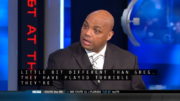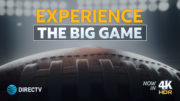It’s hard to even remember, but there was a time when DIRECTV’s receivers were meant to be general-purpose entertainment hubs. There were options for playing music, showing photos, and you could even watch YouTube videos. The whole idea started before smartphones got big, when it was still thought that you wanted to do stuff like that on your TV.
And one day, YouTube support on DIRECTV went away.
There’s a big difference between streaming apps and pay-TV hardware. We don’t talk about it much, but it’s a really fundamental thing. Pay-TV hardware is designed to work for a single purpose. Most of what it does is hardwired into its chips. This makes the thing easier to support, easier to manufacture, and less expensive over time. But, it does mean that it’s less upgradeable.
On the other hand, streaming apps are changing all the time. You don’t realize it, but the Netflix and YouTube content you watch today wouldn’t play on an older version of that app. Companies like that are always adopting new technologies to make their content play better with less data use.
Unfortunately it means eventually some hardware gets left behind. This was the case back in ’15 with DIRECTV’s hardware. While some of its newest Genie boxes might have had the horsepower to support YouTube’s (then-new) VP9 codec, most didn’t. So, facing low usage of the YouTube feature, DIRECTV just pulled it. This article from 2015 is all you have to remember it by.
And you know what, no one complained. The YouTube experience on DIRECTV was nowhere as good as you’d get from a streaming box or smart TV in that day. It absolutely wouldn’t have compared with what you get from today’s YouTube app.
This happens all the time
A few months ago, for example, certain older Roku TVs and streamers lost the ability to watch Netflix. They just couldn’t handle the new technology. The same thing happened with my first smart TV. It lost both YouTube and Netflix eventually, and eventually I just replaced it with something newer.
Is there a long-term solution for this?
Yes, it’s called sustainability. TVs, pay-TV boxes, and whatever could be made modularly so that you could swap parts. An old smart TV might be a perfectly good TV but the smart part could be swapped out. Unfortunately that would probably double the price of the TV and so it’s not going to happen. The other way to deal with it is to use new streaming hardware in your entertainment system.
And, also, sometimes you have to realize that it’s ok to let go. DIRECTV’s “Media Center” strategy came from a time when there was no such thing as a smart TV, when a “smartphone” meant it could sent emails and texts. People today are smart enough to use multiple devices. They don’t need to stay in a single ecosystem. It’s funny, DISH customers can use Netflix and YouTube on their devices. I don’t know if they really do because no one ever talks about it. Of course they don’t since you can watch Netflix so many other ways and YouTube so many more than that. Sometimes, new thinking is ok. So take one more moment to “throw back” to the days when someone thought a DVR needed to show YouTube videos and then… move forward confidently.





